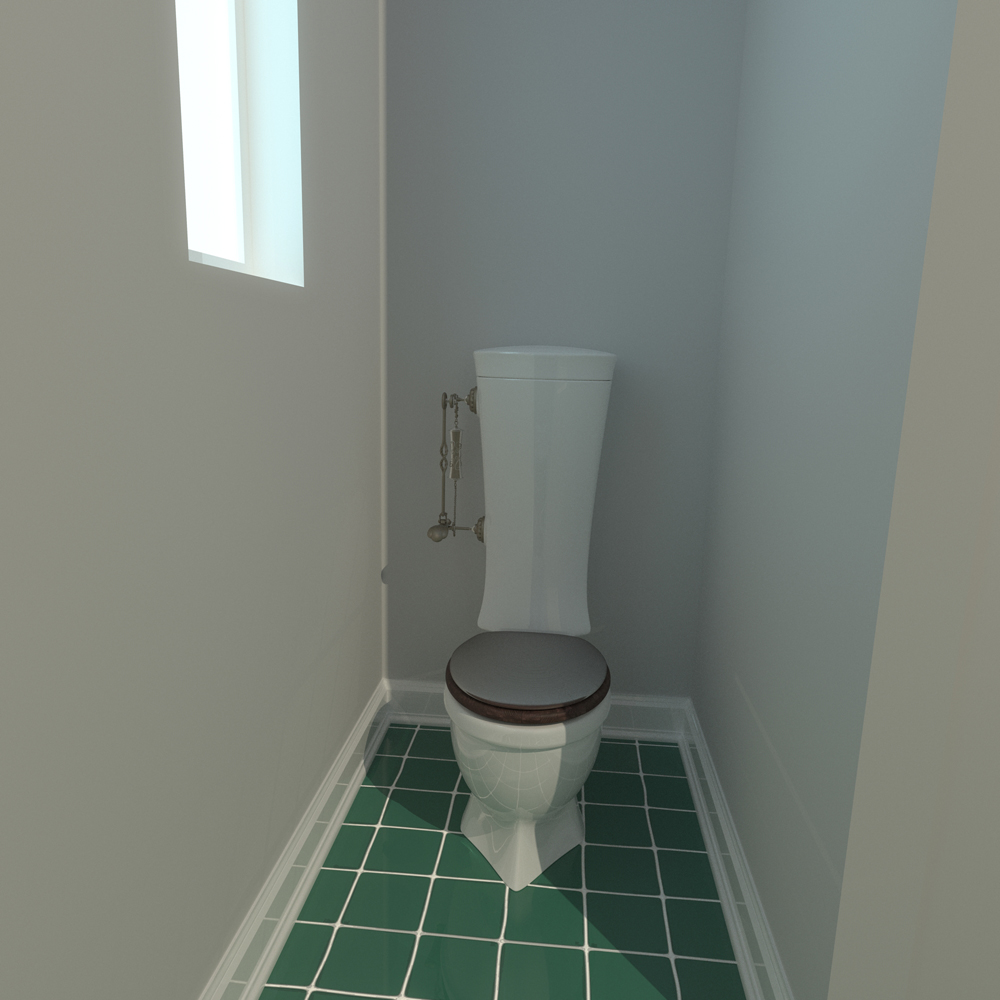Here is a test render with the toilet placed in the final architecture.
The bathroom is designed with a 12'x12' footprint and the toilet sits in a corner nook, with two slim frosted-glass windows on the one wall.
The materials are temporary for testing purposes and no details have been added to the bathroom scene besides the toilet and basic trim.
But my current purpose now is to hammer out the lighting and design challenges first.
It's been a good exercise so far.
The following pic was rendered in Kerkythea Boost with 115 passes in the mode called: "Metropolis Light Transport (BiPT)",
which takes a looong time to render, but I feel it has the best results when subtle light bounces, reflections and caustics are concerned.
This constitutes about 20 hours of render time with a four-core i7 cpu. The image was at 2000x2000 pixels, but reduced to 1000x1000.
I like to render the MLT images at twice the pixel dimensions, then reduce it when final because there is a trade-off and most of MLT's inherent noise is reduced.
More poly's and lights add exponentially to the render time of course, and there are a lot in this current incarnation of the toilet model. I'll scale down the poly count when I get more familiar with what I can get away with in this scene.
I ran an earlier "Photon Map + caustic + fine, aa 0.3", but the results were a little cartoon for me.
I'm still at the bottom of the rendering learning curve, though.
As I progress with my scene I'll produce more renders.
